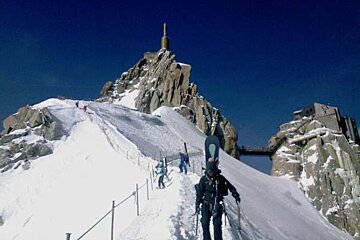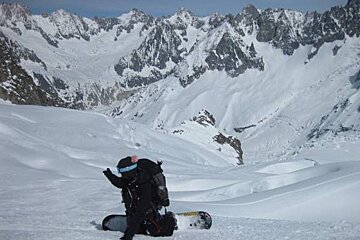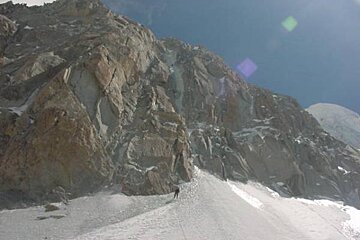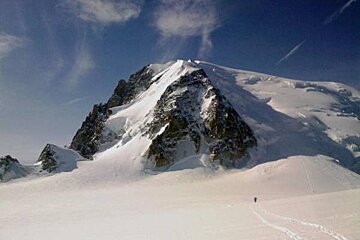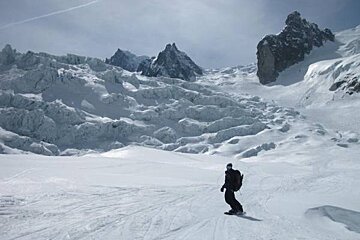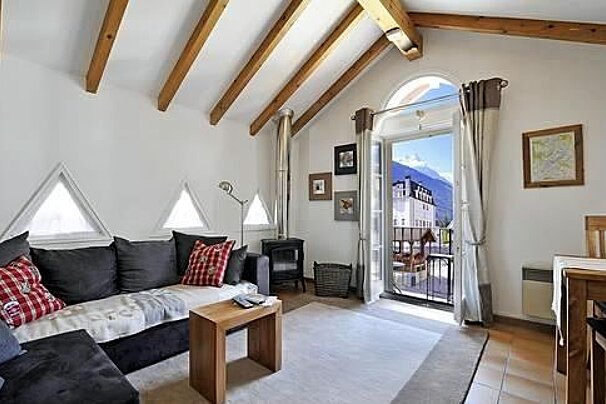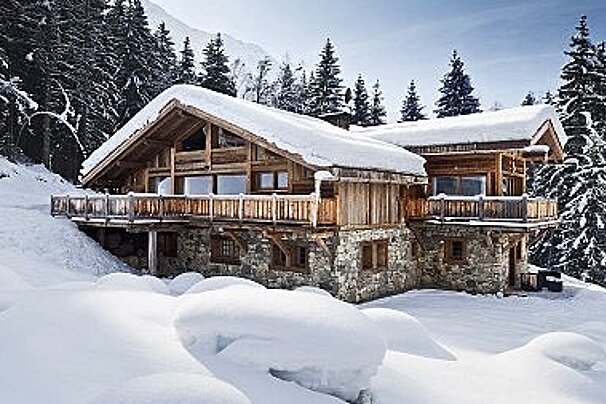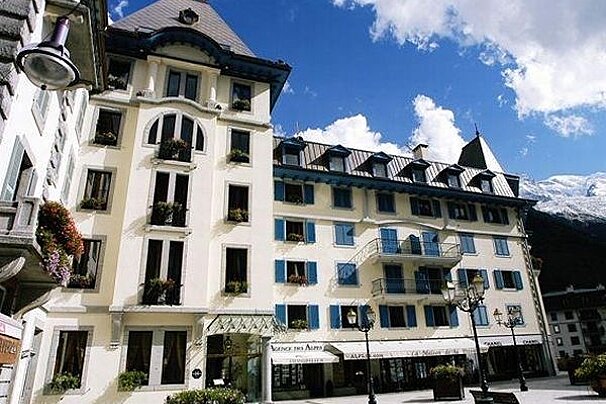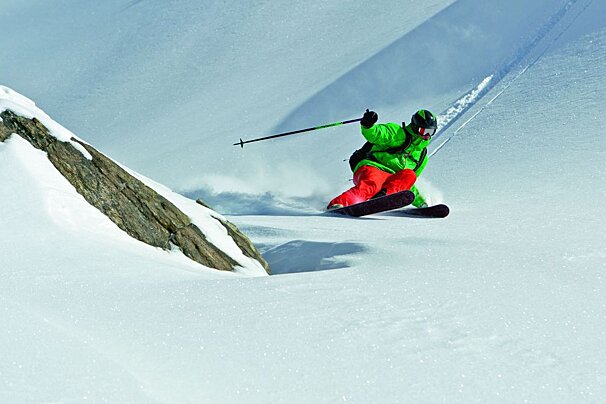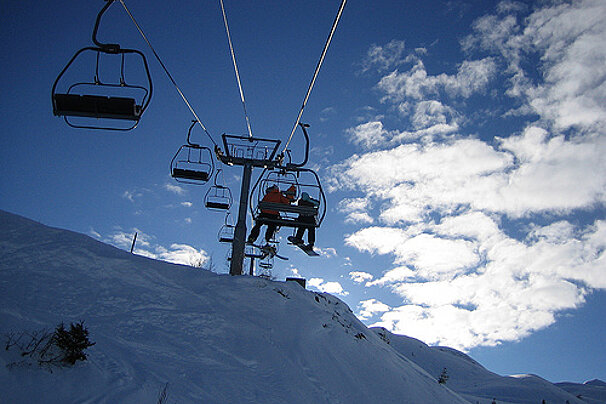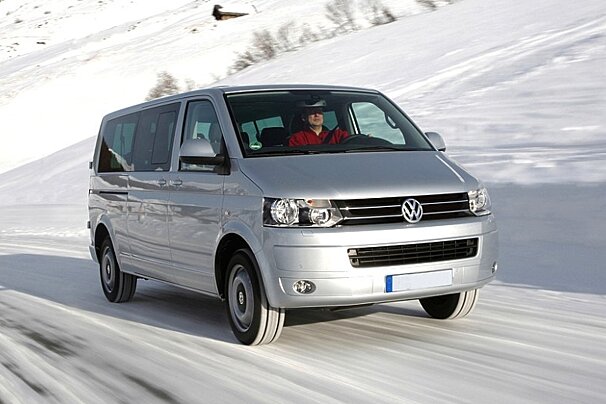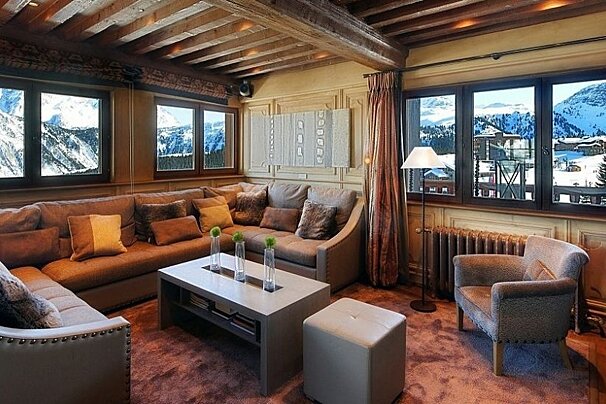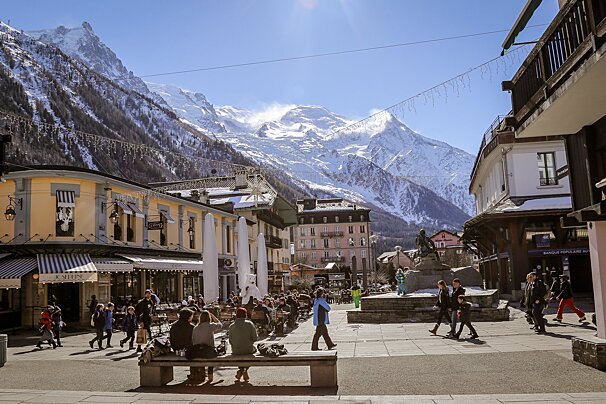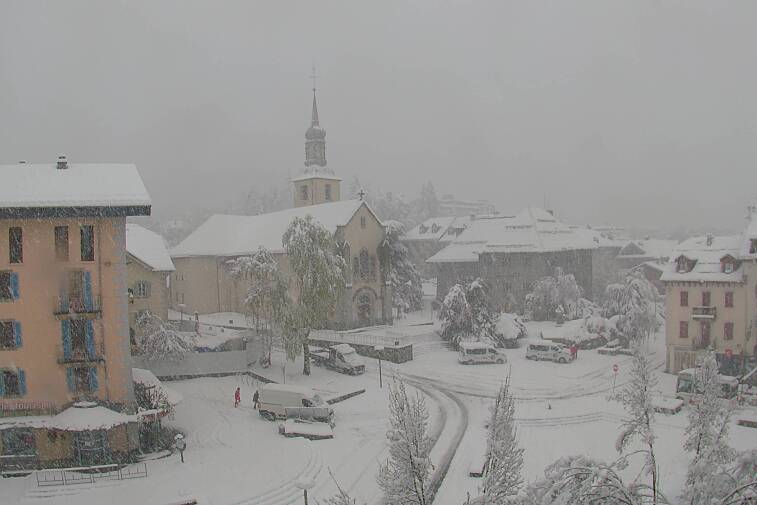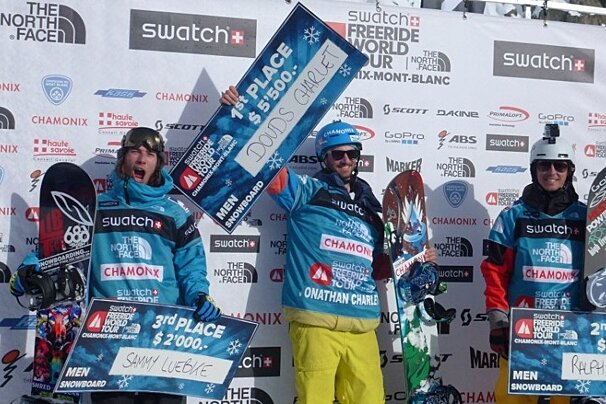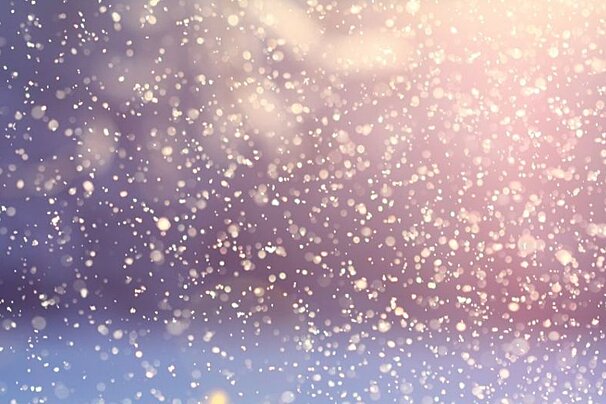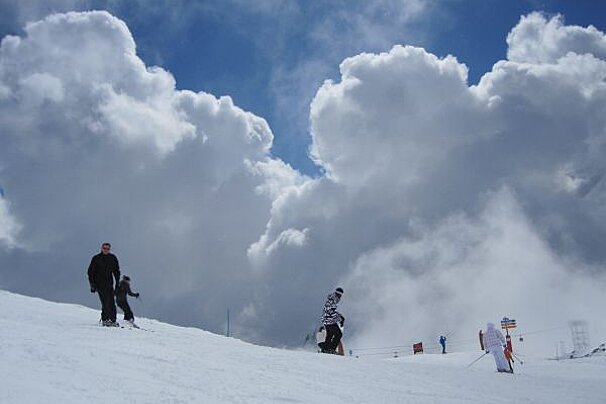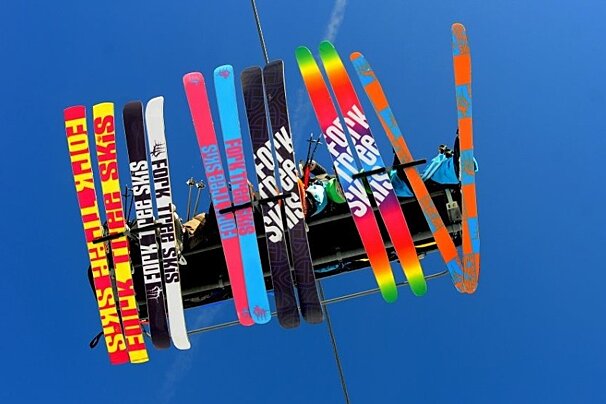Chamonix Activity Report: 26th May 2010
This week we have a bonus report from our Verbinet.com reporter, Lee Fieldsend, who decamped to Chamonix for a spot of ice climbing…
At the end of the winter season I headed over to Chamonix to go ice climbing. While some of you might think that ice climbing in spring sounds like a dangerous proposition I can assure you that it is not. Up at the Aiguille du Midi, probably the most famous ski lift in the world, there is an abundance of ice climbing that stays in condition all year round due to its high altitude aspect.
Our plan was to catch the lift early in the morning and head to an area called Mont Blanc du Tacul. From there we were to climb a five pitch goulotte (a narrow ice filled chute) called the goulotte Chere. After that we would then make our return to Chamonix via the famous and stunning Vallée Blanche off piste route. Although the weather had been very unstable for the preceding week, the forecast which had become more accurate closer to the date, had given us one day of clear stable weather before a new front was due to come in.
The view from the top of the Aiguille du Midi is stunning to say the least and tourists flock from around the world to drink in the incredible views of ranges and ranges of steep mountains that extend in all directions. The pinnacle of which is the Mont Blanc mountain, the highest in Western Europe. The weather forecast was spot on and with clear blue skies, a hot sun and a cooling breeze we set out with high spirits.
Most tourists stop at the top but for everyone else who wishes to ski, board or climb they must first overcome a descent down a knife edge ridge line in order to reach the glacier. Although the ridge is protected by two rope rails a fall here would be deadly as on one side the ridge falls away steeply to the Chamonix valley below. On the other side a fall would send a person hundreds of metres down to the heavily crevassed glacier below. Needless to say crampons and ice axes are a necessity here. Many groups rope up here too but if you are comfortable using these tools then it is not always necessary.
Once at the bottom of the ridge we then snowboarded across the glacier. Although the snow was actually in quite good condition, considering the time of year, our heavy backpacks made it a difficult descent. Our only protection against falling in crevasses was our speed on our snowboards which eventually ran out half way across the glacier. From here we continued our approach on foot, short roped together to guard against the ever present threat of literally stumbling on a hidden crevasse.
The mountain we were heading towards loomed high above us as we got closer and closer to the start point of our climb. A thin strip of ice, barely visible from afar, snaked up the pillar style rock formation. Two climbing teams were already battling their way up and a third was beginning the ascent.
After preparing our gear I began to climb. First I negotiated the bergschrund at the bottom of the climb. This is a feature in the mountain where the glacier meets the permanent ice cap of a mountain. Over time as the glacier moves and reduces in size these open up to reveal gapping black chasms. Luckily a thin snow bridge still connected the glacier to the main face and I carefully negotiated it and commenced the climb.
The ice on the bottom pitch was rotten and of mixed quality. This made ice axe, crampon and ice screw placement more of a challenge but eventually I made the first belay station. I had only been climbing for twenty minutes but by this time we had slipped into the shade of the mountain and the lack of direct sun caused my hands to get cold very quickly.
Once at the relay station I had a fantastic view across the glacier and back up in the direction from which we had come. My partner joined me and we continued to climb. The next four pitches were in much better condition and solar cups in the ice gave it the feeling of climbing a ladder. The dramatic scenery and thrill of climbing in such an incredible environment was heightened by the sheer structure of the climb. The ice which was only shoulder width in some places was flanked on all sides by thick blocks and columns of cold hard granite. This gave one an acute feeling of claustrophobia but kept pushing us on to the higher more open parts of the goulotte.
After negotiating the steepest and narrowest pitch we eventually reached a more open area. From here we were treated to more incredible views and because of the comfortable temperatures were able to pause for a while in the total silence of the mountains. Sadly we were now short on time and would be unable to make the final pitch so we began the long descent to the glacier below.
At the bottom we once again encountered our bergschrund crevasse. However this time it was not so easy to avoid as our rappel route did not cross the snow bridge, which was out to the right of the climb. My partner went first and upon reaching the crevasse she fell in. After struggling for a few moments she was able to scramble over to the other side, unclip the rope and signal for me to descend. On reaching the crevasse myself I realised the shallow incline of the slope would not permit me to bound over it on the rope. Instead I slowly inched my way to the very edge so as to be able to let the rope out at the same time as I jumped back, hoping to clear the chasm and land on the other side. As I prepared to jump the edge gave way and I unceremoniously fell in. Thankfully we were rappelling with prusik knots as well as our belay devices. This system stops a free flow of rope in the event that both hands are occupied. The knot bit the rope and I came to rest with my head still poking out looking back up at the climb we had just returned from. After a few moments of struggling I was able to use my ice axes to grab the other side and it allowed me to turn and plant my dangling crampons into the wall of the crevasse. With a little extra shot of adrenaline I heaved up and in an instant I was free.
As we were now pushed for time we quickly swapped ice axes for snow boards and began our descent of the Vallée Blanche. Our route down to the valley below took us for 17kms through some of the most incredible mountain scenery imaginable. On either side huge towering snow covered mountains dwarfed the large valley which had been carved out of the rock by the now retreating glacier. In some places we were able to enjoy some wide turns in quite nice spring powder but in other areas we had to snake our way through massive crevasse fields. On either side of us large seracs rose up ominously like silent sentinels. From time to time I found myself snowboarding towards or by the side of crevasses which seemed to yawn in appreciation of my proximity.
Eventually after many stops to route find and take in the amazing scenery we arrived on the bottom part of the glacier which had seen us drop almost 3000 metres of vertical height. From there we began a fifteen minute run over an open and flat glacier field. The route across the Mer de Glace was obvious and it was good to be away from the seracs and crevasses of the main glacier. After that we reached the moraine of the glacier which is essentially the foot. Here we found the usual mess of regurgitated broken rock, dirty snow and pools and streams of ice cold water. Our final objective was to fight our way through this jumble and to reach the staircase that leads up to the lift and onto the Montenvers train that would take us back to civilization. The stairs and platforms snake up a huge slab of rock and takes around fifteen minutes to ascend. This used to just be a large metal ladder which was very tiring in the past, especially with ski boots and heavy back packs.
We made the last lift, which waited for another ten minutes as the last arrivals raced up the stairs to the impatient shouts of haste from lift staff. By the time we got on the train at the very top we were exhausted but very content. As the pretty little train wound its way down the mountain we passed through yet more incredible scenery. Gone were the dramatic scenes of the mountains, replaced with pastures of wild flowers, alpine forest, quaint little chalets and a warming sun that had had been our companion throughout the day.
For more information about lift price information and parking check out the Vallée Blanche skiing article on this website.
Check out our Mountain Guide Listings for contact details of local guiding and activity companies.
Check out what to do around town once the lifts have closed with our Apres Ski Report - a weekly round up of what's hot and where to party in Chamonix!
